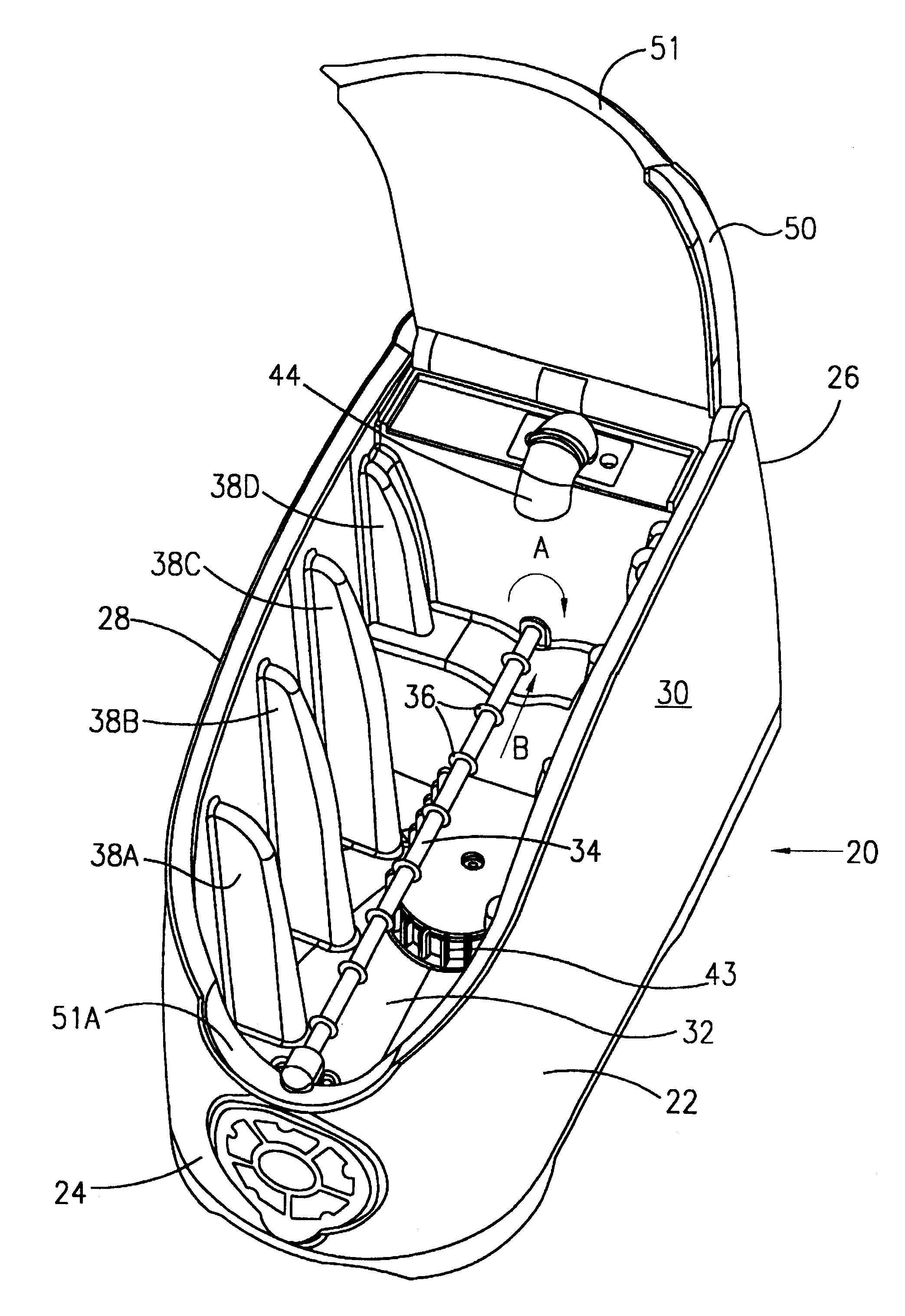Rapid fluid cooling and heating device and method
a fluid cooling and heating device technology, applied in domestic cooling devices, lighting and heating devices, container discharge methods, etc., can solve the problems of increasing cooling lag time, and inability to meet the needs of refrigeration and freezer units
- Summary
- Abstract
- Description
- Claims
- Application Information
AI Technical Summary
Benefits of technology
Problems solved by technology
Method used
Image
Examples
Embodiment Construction
will now be provided with reference to FIGS. 1-14. It should be understood that these drawings and this detailed description are exemplary in nature only, and do not serve to limit the scope of the invention, which is defined by the claims appearing hereinbelow.
FIGS. 1A and 1B depict a typical 12 ounce beverage container 10 positioned vertically and horizontally respectively. The beverage 11, contained therein is shown with an air space 12A in FIG. 1A and a full can length air space 12B in FIG. 1A. Rotation of the container along its longitudinal axis L, when the container is positioned vertically, results in a rotation of an essentially rigid body with little mixing and extensive cooling times being required. By contrast, the horizontally disposed container 10 in FIG. 1B, when rotated about its longitudinal axis L, results in a high degree of agitation with a high degree of mixing and exchange heat transfer rates.
FIGS. 2-7 depict a preferred embodiment of the invention. Cooling uni...
PUM
 Login to View More
Login to View More Abstract
Description
Claims
Application Information
 Login to View More
Login to View More - R&D
- Intellectual Property
- Life Sciences
- Materials
- Tech Scout
- Unparalleled Data Quality
- Higher Quality Content
- 60% Fewer Hallucinations
Browse by: Latest US Patents, China's latest patents, Technical Efficacy Thesaurus, Application Domain, Technology Topic, Popular Technical Reports.
© 2025 PatSnap. All rights reserved.Legal|Privacy policy|Modern Slavery Act Transparency Statement|Sitemap|About US| Contact US: help@patsnap.com



